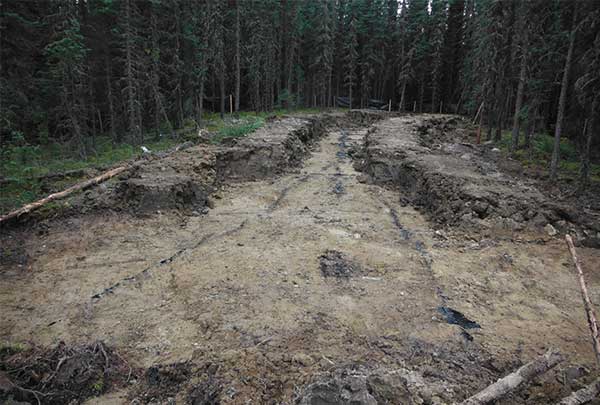Steam Injection Fractures Caprock in Big Alberta Spill, Regulator Confirms
Incident highlights fragility of high-cost energy extraction.

Large fractures in earth seeped bitumen at one of four well sites operated by CNRL near Cold Lake, Alberta. Photo: CNRL, September 2013.
The bitumen blowout occurred sometime between May and June 2013 at Canadian Natural Resources Ltd.’s Cold Lake project, an operation that uses steam injection to melt bitumen and bring it to the surface.
In this case, the pressure from the steam cracked rock between different formations, allowing melted bitumen to find natural fractures and flow to the surface at five different locations, including under a lake.
In some places, the bitumen erupted through fissures in the ground as long as 159 metres deep.
The event, not the first of its kind as an earlier Tyee investigation revealed, killed wildlife and seeped nearly 20 barrels of bitumen a day into muskeg over a five-month period.
In a lengthy report, the Alberta Energy Regulator concluded what experts had suggested all along — that all five bitumen seeping events “were caused by excessive steam volumes, along with an open conduit (wellbore or natural fracture or fault) or hydraulically induced vertical fractures.”
That panel submitted “that CNRL’s approach had insufficiently addressed the impact of geological variability” and how natural fractures would respond to increases in steam pressures.
…click on the above link to read the rest of the article…